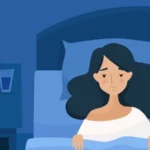What Is Autogenic Traning?
Contents
Autogenic training is a type of body relaxing technique, where you promote the feeling of calm, which works as a relaxation for the body.
These relaxations reduce stress, anxiety, and workplace tension by releasing good hormones in your body like serotonin, dopamine, and endorphins.
Autogenic training was developed by the German psychiatrist “Johannes Heinrich Schultz” in the 20th century (1)
It has been used to treat several conditions including stress, anxiety, sleep disorders (insomnia), high blood pressure, etc.
According to Hafeez, this method is currently frequently used with cognitive behavioral therapy but is also used for stress.
Check OUT – Biofeedback Therapy For Stress
How Does Autogenic Training Work?
AT is focused on bringing relaxation to the body, through visualizing certain images, autogenic formulas, and repeating processes.
Make sure, you are focused on your body sensation, and relaxation during the session.
Autogenic training affects the body’s autonomic nervous system, by bringing similar effects as yoga, hypnosis, and meditation.
It starts with a concentration on the feeling of heaviness in the limbs, then goes to the feeling of warmth in the limbs and trunk.
And in the final stage, focuses on the feeling of relaxation in the body.
Sessions generally stand last for 15 to 20 minutes, participants also suggest you practice it at home regularly (2).

Autogenic Training vs Progressive Relaxation
Both autogenic and progressive relaxation techniques are worked on the body and mind to promote relaxation which aim is to reduce stress.
Here is the difference between autogenic and progress techniques which seen as similar but work slightly differently are:
In autogenic training, you focused on autonomic strategy, and visualization images such as heaviness, relaxation, and warmth, to promote relaxation.
Remember that everyone’s experience with autogenic training is different, and it may take some time to find comfort, and relaxation.
PMR is focused on reducing tension by targeting different muscle groups to bring awareness of the difference b/w tension and relaxation.
To do PMR techniques, you have to follow these steps include:
- Find a slient and comfortable place where you can sit or lie down
- close your eyes and focus on your breath
- starting with your feet, tense the muscles in your feet and hold for a few seconds
- your feet muscles should be relaxed, and you should focus on feeling at ease
- go up to your leg muscles, tensing and soothing them in the same manner
- continue moving up the body, tensing and relaxing the muscles in your arms, chest, and back
- end with the muscles in your face, tensing and relaxing them
- take a few deep breaths and focus on the feeling of relaxation in your body
It’s important to be patient and give yourself space to unwind and let go of the tension (3)
It will be repeated until the participants acquire a completely relaxed (4)
How Can It Help You? or Benefits
It can help a person in several ways including:
Improve Focus – It is clear that it is effective in improving athletic execution by reducing muscle tension, managing chronic pain, and improving focus.
Promote Calmness – It is also a relaxation technique, where through visualization and body awareness you promote relaxation, which calms down your tension.
Enhancing self-awareness – It definitely helps individuals to aware of their bodies, and emotions, and also increases self-expression (5).
Improve sleep – A study, the result showed that AT may improve sleep patterns for patients with a range of health ailments.
Managing chronic pain – Several studies‘ conclusion tells that AT can be managing chronic pain at moderate to high by releasing muscle stress.
Improve athletic performance – Studies have been shown to be helpful in enhancing athletic performance and speeding up mental recovery from sport-associated injuries (6).
If you are on any medicines, and under any treatment, first consult your doctor, before entering this process.
Is Autogenic Training Help In stress?
Stress is a very common mental issue, that affects everyone, whether it is young, old, rich or poor, and gender (7)
WHO claims that stress is the leading cause of mental illness, which even causes other health issues like anxiety, heart disease, etc.
According to Worldcat.org, several psychosomatic diseases as a result of stress can be reduced by the autogenic method.
Published articles showed that the method can able to reduce the symptoms of anxiety, fatigue, and irritability.
According to the Healthline site, It is helpful in managing daily stress, and tension and it can even be helpful during panic attacks.
It also, improve sleep by reducing stress level, also a reduction in muscle stress, high BP, overall well-being, and a sense of relaxation.
Studies also reveal that autogenic training may be effective in decreasing women’s anxiety before giving birth.
In one more study, results reveal that (AT) does reduce stress and anxiety compared to no treatment (8)
How To Do It?
The therapist follows a series of exercises that are performed which include:
- It begins by focusing on the sensation of heaviness in the hands and legs, follow by repeating the performance.
- next step, pay attention to the warmth of your arms and legs, therapist repeat this multiple times.
- Then, focus on concentrating on your heartbeat and breathing.
- finally, focus on the sensation of relaxation in the body, repeat process is a vital part of this process
Through deep breathing, you are able to concentrate.
Deep breathing also lowers the heart rate and blood pressure, which contributes to feeling relaxed and calm.
Other Ways For Relaxation
There are other several ways to relax your body, and these progressive relaxation techniques are considered best to reduce stress.
Here are other relaxation techniques which include:
Yoga
Yoga is the best option to reduce stress, through relaxation, posture, meditation, breathing, etc.
During yoga, our body promotes feel-good hormones (endorphins), which reduce stress levels by decreasing cortisol levels (6)
Meditation
Several studies proved that people who engage in regular meditation are able to change how the brain responds to stress and anxiety.
Also, meditation, breathing exercises, and yoga combination can reduce stress, and decrease the side effect of treatment.

Biofeedback
In this, a specific device is used to monitor your health, where its result comes in the graph and visual display form.
After the result come, the therapist will instruct you on strategies through relaxation, or exercise, to control brain activity, and physiological processes.
Massage
When therapists use their hands on soft tissues of our body, so this helps in releasing tension and relaxing the muscles.
Studies show that massage therapy is for a variety of medical conditions and stressful experiences, which increase serotonin and dopamine.
Hydrotherapy
Researchers report tells that water therapy can reduce the level of stress, and anxiety (5)
According to a study, 10 mint water pools raise finger and heart rates along with emotions of well-being and reduce anxiety (6).
Hot showers can release a hormone called oxytocin, which reduces stress, and anxiety. that I personally experienced.
Deep Breathing
During stress, taking deep breathing, fill the lungs with enough oxygen, which increases the amount of oxygen in the blood.
This deep breathing can reduce the stress hormone called cortisol which further contributes to reducing the risk of feeling anxious.
Tai Chi
It is a combination of yoga, meditation, breathing exercises, and different styles of tai chi, which help in reducing stress.
A study result, practicing tai chi improves sleep quality, compared to non-Tai chi participants, in both healthy adults and patients.
Aromatherapy
It is commonly used to treat various health issues whether it is stress, anxiety, headache, digestive issues, and even help in pregnancy.
Aromatherapy is also suggested during labor, with no significant reported side effects in the mothers and neonates (2).
Guided Imagery
It is a strategy for promoting relaxation and lowering stress through imaging or visualization of happy images to promote relaxation by reducing stress.
A 2015 research on senior citizens found that guided imagery practice may be able to enhance the quality of sleep
Music Therapy
A 2017 research notice found that listening to songs, especially jazz, may help reduce the signs of depression.
According to a report from (global council on brain health), shown that music can decrease stress, and anxiety by improving mood.
We have deeply discussed these relaxation techniques topic on our previous topics, you can check them out.
Is There Any Downside To Autogenic Training?
It is considered quite a safe and effective relaxation technique but also has some downsides.
However, with any relaxation techniques, it also becomes vital to practice is correctly, and refrain from overusing them.
Some people, take time to see its benefits, due to several reasons like difficulty in thought focus, or maybe too stressful a life.
If you are on medication, or under treatment, then consult your doctor, before jumping into any techniques, exercises, etc.
Always pay attention to your body, and stop it if you face any discomfort or pain. consult the doctor, as it may be a sign of another illness.
Down Line
AT is focused on bringing calm to your body, by visualizing certain images, autogenic formulas, and repeating processes.
It is very helpful in reducing stress, and anxiety (both contribute to sleep disorders like insomnia) high blood pressure, etc.
Make sure, the person under any treatment and on medication will first consult their doctor, to prevent further possible adverse effects.




